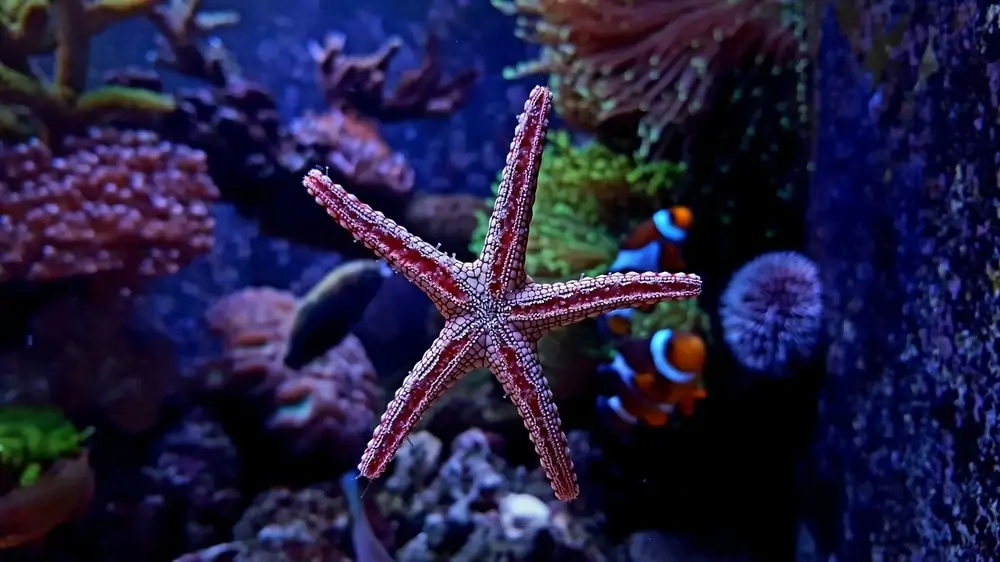Angelfish can make a great addition to any aquarium, they can grow quite large, and you can choose between several varieties. Some types will require more water, prefer more or less vegetation, or be more aggressive than others, so we highly recommend doing some research before you make a purchase.
We’ve made a list of 13 of the most popular types of Angelfish found in aquariums around the world, and we’re going to take a look at each one and tell you how it differs from the others. We’ll talk about tank size, maximum growth size, defining features, aggression, and more to help you make an educated purchase.

The 13 Types of Angelfish
These are the thirteen types of Angelfish listed in alphabetical order.
1.Albino Angelfish
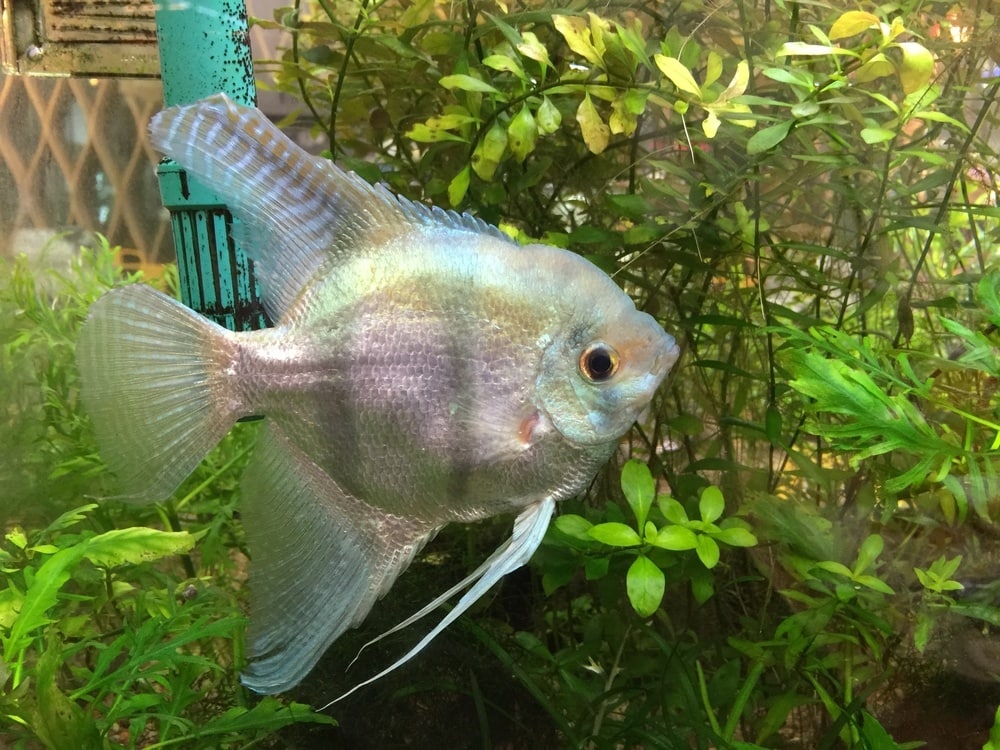
This first strain of Angelfish can range from white to silver in color with bits of yellow and orange around the face. Their eyes will be pink in all cases, and they will be sensitive to light. Albino Angelfish like tanks larger than 30 gallons with plenty of space for free swimming, but they are easy to care for and can get to be about 6-inches long. They like rocks and driftwood to hide from the light but be careful not to make the tank too cluttered that it prevents free movement.
2.Black Lace Angelfish
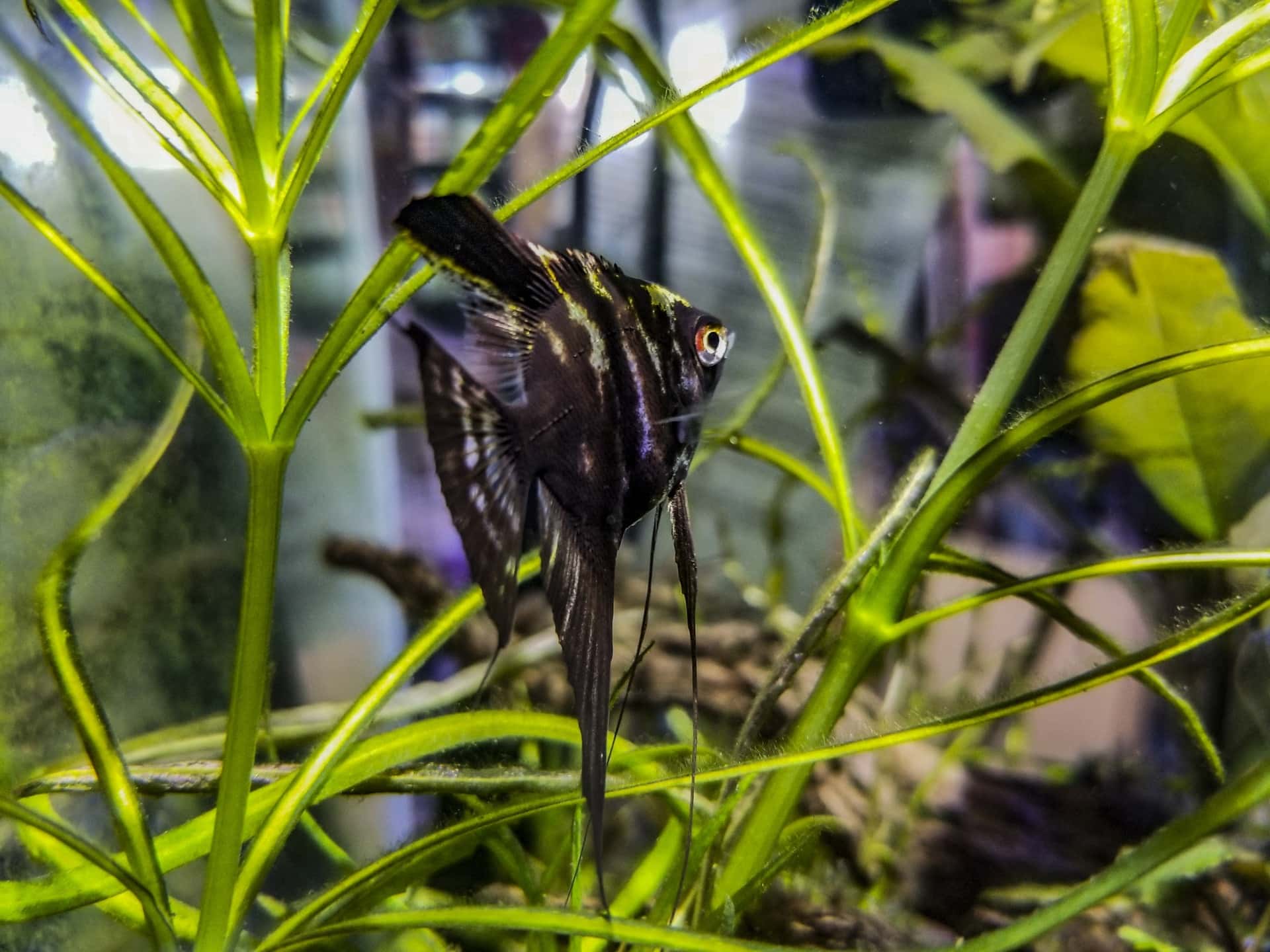
Black Lace Angelfish are rare compared to many of the other Angelfish on this list, so they are usually a bit more expensive a well. This breed doesn’t like noise, so they are not well suited to loud music or main street apartments. They are more relaxed than many of the others, choosing to stay in place over a long swim and aren’t nearly as aggressive. Black Lace Angelfish are also a little more sensitive to cooler temperatures, so you’ll want a reliable heater and accurate thermostat.
3.Black Veil Angelfish
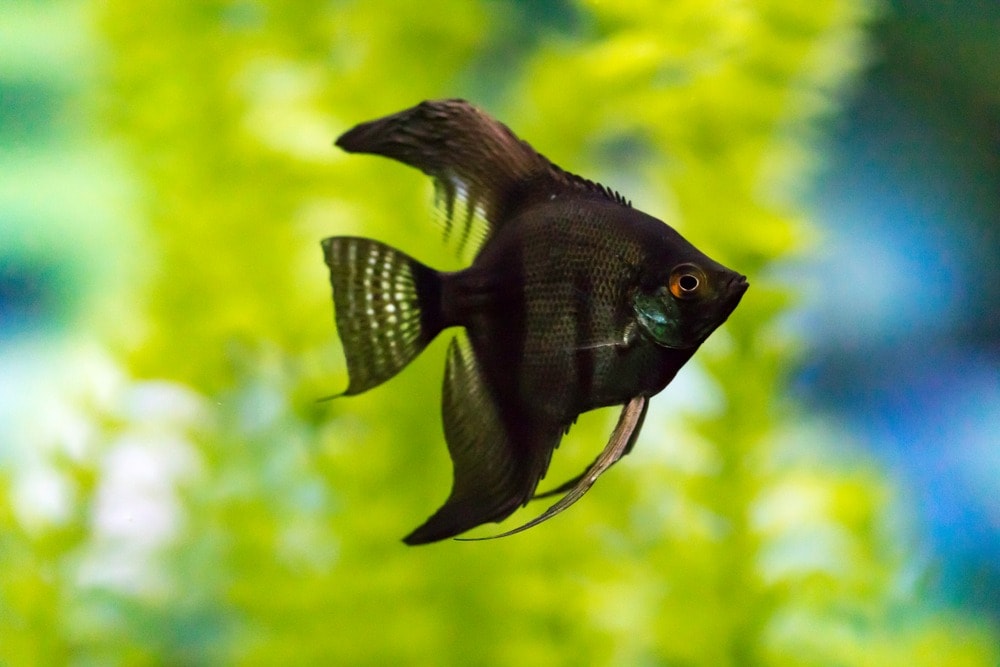
The Black Veil Angelfish has a dark black color that is slightly darker than the Black Lace Angelfish. Its fins grow longer with age, and it’s reasonably tolerant of temperature and pH changes in the water. It can also make a home in hard and soft water, making it one of the easiest Angelfish breeds to maintain. The Black Veil Angelfish is also one of the easiest to find, so there is a good chance you have seen one of these fish before.
4.Blushing Angelfish

The Blushing Angelfish begins life with a mostly white body and black fins as it matures it begins to develop blue strips. This breed prefers a heavily planted tank that contains rock formations as well as driftwood and other objects. It’s peaceful with other fish as long as there is enough room in the tank. Blushing Angelfish have very bright colors and are sure to get noticed in any home.
5.Clown Angelfish
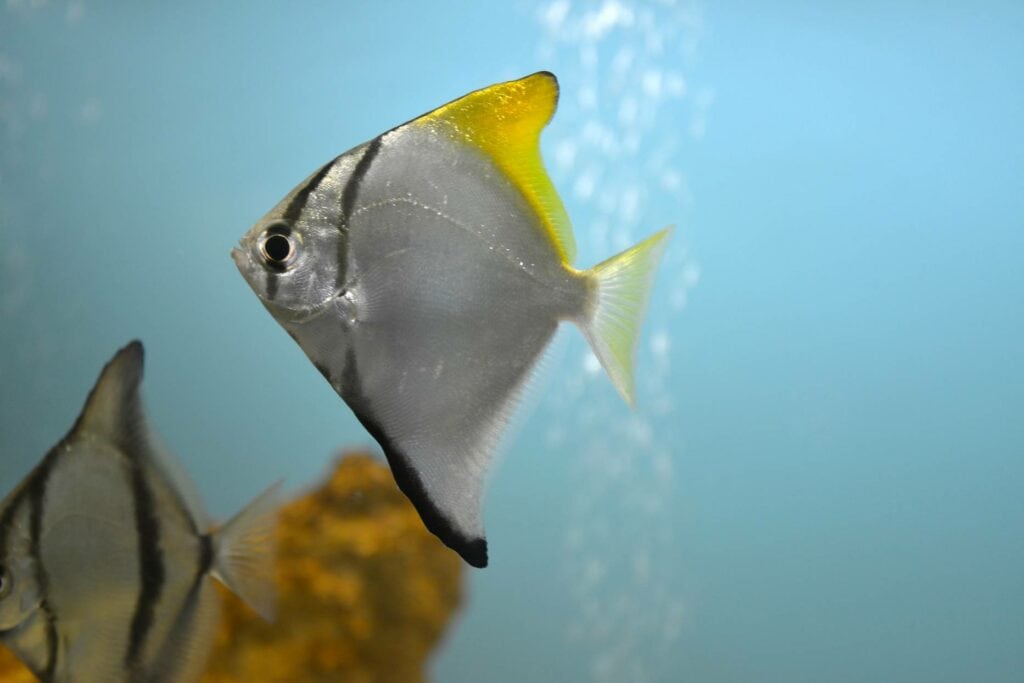
The Clown Angelfish is one of the rarer breeds of Angelfish, and you may find it difficult to find one without significant effort. These fish have a complex pattern across their entire body that creates spots that vary in size and shape. Clown Angelfish are more peaceful than many other breeds and are easy to maintain. These fish prefer an aquarium with lots of vegetation and places to hide, preferring tall plants to caves and rocks.
6.Ghost Angelfish
Ghost Angelfish are Angelfish that have a stripeless gene and therefore are without their fanciful marking. Ghost Angelfish can be light or dark-colored, and they tend to be more energetic and aggressive than many of the others. In some cases, the Ghost Angelfish can begin to show stripes as it gets older.
7.Gold Angelfish

The Gold Angelfish is a smaller sized Angelfish naturally found river systems in Northern South America, particularly around the Amazon Basin. This breed usually grows no longer than four inches, and it’s mainly reddish-orange but can also have some brown coloring. All fins and lips have an orange lining, and the eyes are orange as well. It may also have vertical yellow lines.
It’s rare to see the Gold Angelfish in and aquariums because they require a tank larger than 55-gallons and are usually not very friendly to other fish.
8.Leopard Angelfish
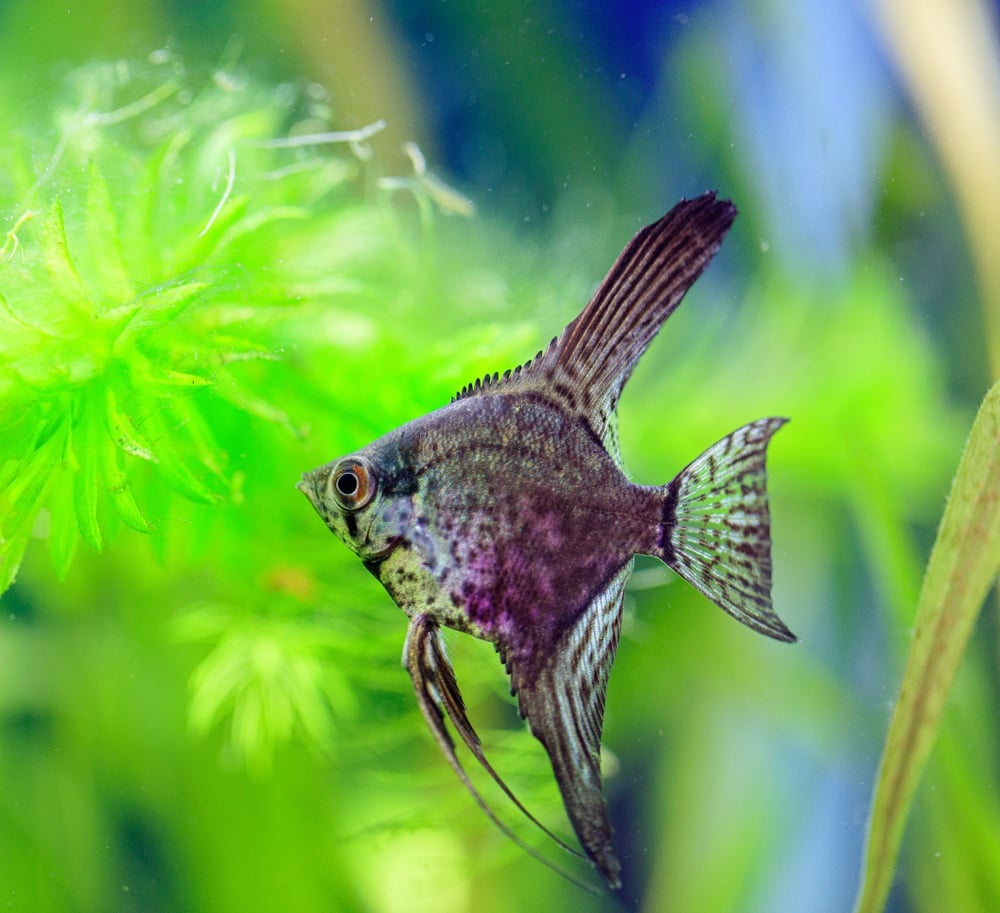
Leopard Angelfish are a very popular breed to keep in the home. These fish feature a trademark spotted pattern, and they have a blue gene that does not allow the color to show until the fish is nearly fully grown. They can often live for more than ten years and reach a size six inches long or more.
9.Koi Angelfish

The Koi Angelfish claim to fame is its stark black and white colorations. There are other colors mixed in as well, like orange and brown, and every fish features a different pattern. These fish prefer tanks of at least 30-gallons and water with a slightly low ph.
10.Marble Angelfish
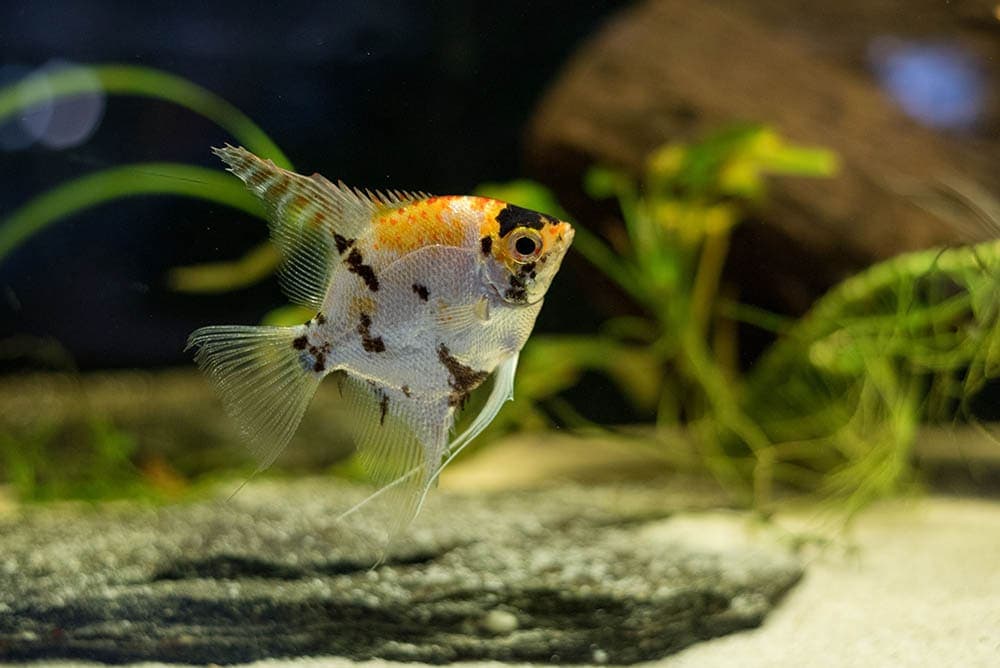
Marble Angelfish have striking colors that include black, white, and yellow in a marble pattern across their bodies. The fins are thin and delicate and can extend beyond their body. Marble Angelfish will require at least 30-gallons of water that’s uncluttered, providing plenty of swimming area. The Marble Angelfish can reach up to six inches in length and are easy to maintain.
11.Platinum Angelfish
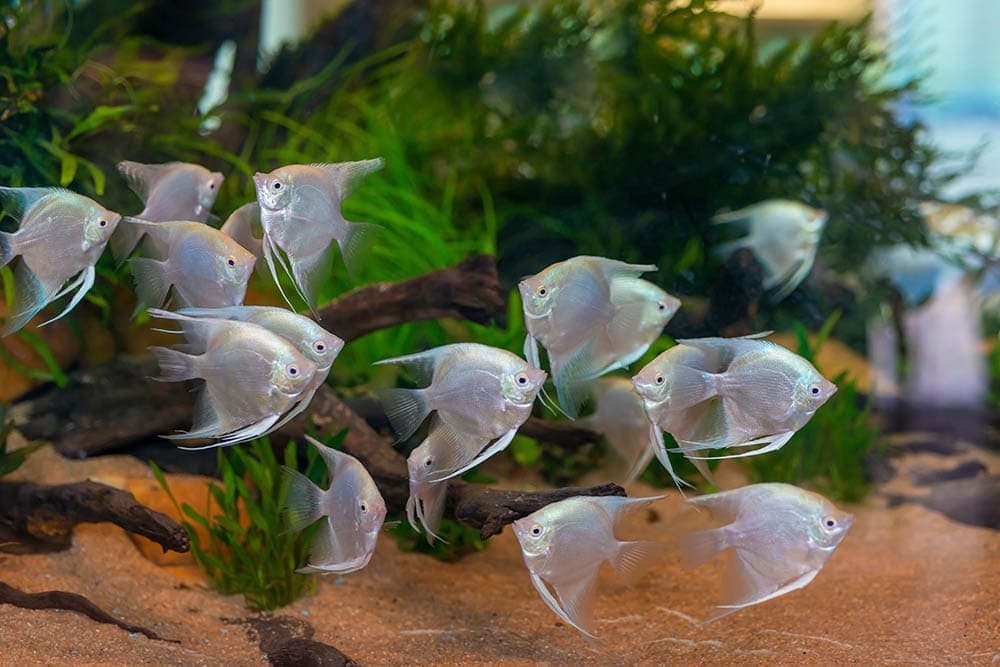
The Platinum Angelfish is quite a rare find, and there are only a few aquariums housing one. The scales are shiny ad have a metallic appearance that can shimmer as light reflects off them. These fish will require a tank that holds at least 30 gallons, and they like the tank to be well planted, providing plenty of hiding spots. They are also semi-aggressive, so you will need to be careful what fish you allow to sare their home.
12.Smokey Angelfish
The Smokey Angelfish typically comes in two varieties, regular and chocolate. Both are virtually the same, with the chocolate variety having a darker brown color. The smokey pigmentation usually begins around the middle of the dorsal fin and can cover the entire back of the fish, though actual coverage will vary. The original color may or may not be visible under the pigmentation, and the smokey color will not be symmetrical.
13.Zebra Angelfish
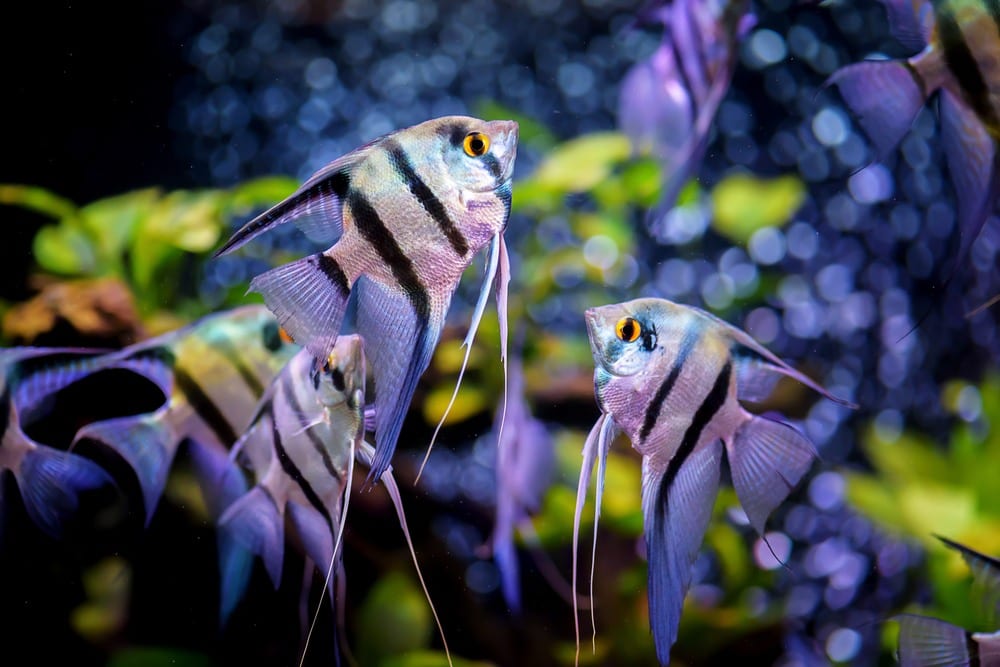
The Zebra Angelfish is one of the larger breeds of Angelfish, and it can reach a size over 10 inches long. The males and females of this breed look different and are easy to tell apart. The females are light blue with a black band covering their eyes. Females also have black stripes at the top and bottom of the tail. The male Zebra Angelfish has a pale blue color. The pattern is reminiscent of a zebra with thin dark stripes running vertically along the sides of the fish.
Unlike most other Angelfish that mate for life and spend their lives in pairs, the Zebra Angelfish has one male leader that presides over a harem of females. When the male dies, the highest-ranking female will turn into a male to take his place. Every female Zebra Angelfish is born female and only becomes male when required to do so.

Conclusion
Provided you have a tank with more than 30 gallons of water and some live plants and rocks, most of these breeds will make a fine pet and a stunning attraction in your aquarium. Black Veil Angelfish and Blushing Angelfish are peaceful and easy to maintain. These fish are perfect if you are new to raising Angelfish, while the Zebra Angelfish might be a top choice for experienced operators with large tanks due to the extreme size and majestic appearance.
We hope that you have enjoyed our look into these fascinating fish and found a breed you like best. If we have helped you find the next addition to your aquarium, please share these 13 popular types of Angelfish on Facebook and Twitter.





